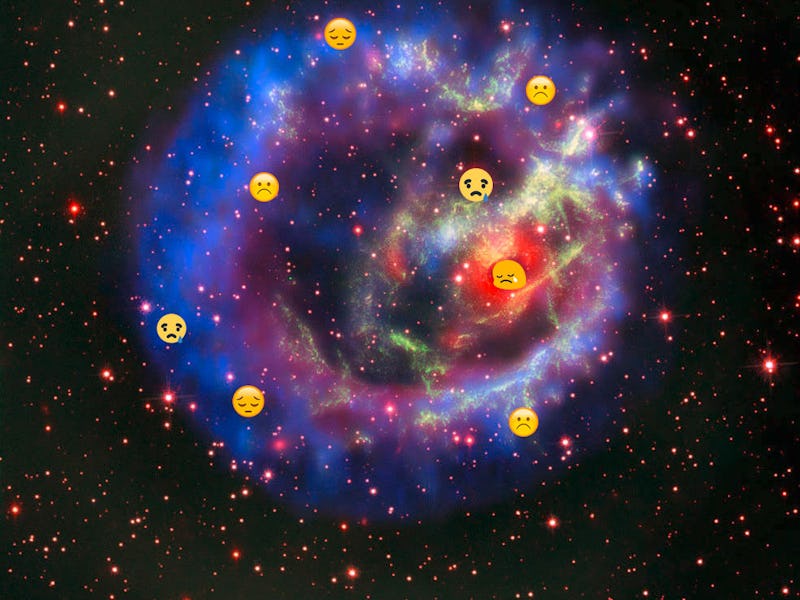This Sad, Lonely Neutron Star Captured by NASA Definitely Cries to Bon Iver

At one point or another after an especially bad breakup, we’ve all been hunched over a family bag of chips, listening to Bon Iver’s gloomy tunes. Eventually, you cheer up after seeing some friends, gaining the strength to delete that heartbreak playlist from your phone. Unfortunately, that’s not how it has played out for the foresaken, extremely isolated neutron star captured in the NASA photograph below.
Roughly 2,000 years ago in the Small Magellanic Cloud, located 200,000 light-years away from Earth, a star’s life ended in a massive supernova — known as 1E 0102.2-7219 (E0102 for short). This phenomenon, in turn, gave birth to a rare and extremely lonely neutron star. The composite photo created by NASA’s Chandra X-ray Observatory and the European Southern Observatory’s Very Large Telescope depicts the object as a lone blue dot peeking out from a crimson mist.
Join our private Dope Space Pics group on Facebook for more strange wonder.
Image of the E0102 remnant, created by X-ray observations from Chandra (blue and purple), visible light data from the Very Large Telescope (bright red), and additional data from Hubble (dark red and green).
A paper published in the journal Nature Astronomy in April says this stellar remnant has a low magnetic field and no companion star — two common components in most observed neutron stars. Only ten similarly lonesome objects have been spotted in the Milky Way, and this is the first one ever detected outside of our galaxy. For all we know, it may be the only one of its kind. NASA believes this finding could help astronomers better understand exactly what occurs when a star dies off.
“Oxygen-rich supernova remnants like E0102 are important for understanding how massive stars fuse lighter elements into heavier ones before they explode,” NASA noted in a press release published Tuesday.
But this cosmic outcast has posed more questions than it has answered. Astronomers are wondering why this sulking star isn’t at the center of the blue circle of X-rays.
One explanation suggests that the E0102 supernova erupted near its neutron star and launched it far away from the explosion at ludicrous speeds of about 2 million miles per hour (3,218,688 kilometers per hour). Another theory suggests that the supernova took place near the neutron star, insinuating that the star is moving slowly and that the red ring of optical light actually comes from the neutron star itself.
Now that scientists have spotted this solitary star, they can piece together the secrets it’s holding about stellar life cycles. Until then, it’ll stay floating, brooding, sulking, and, we hope, looking forward to Bon Iver’s new single, aptly titled “Shittiest Day in American History.”